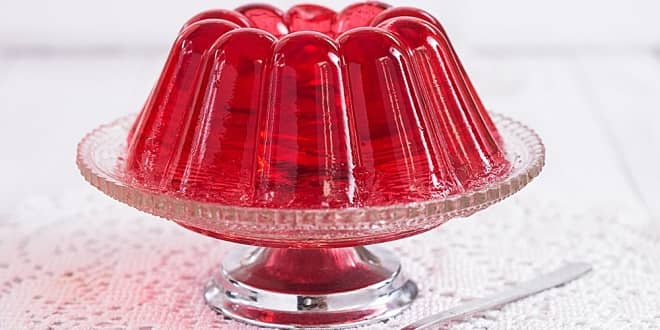Gelatin ( Süleyman GÜVENÇ )
1. BACKGROUND
2. PHYSICAL AND CHEMICAL PROPERTIES
2.1 Amphoteric Properties
2.2Chemical Properties
2.3 Gel Strength
2.4 Viscosity
2.5 Protective Colloidal Action
2.6 Coacervation
2.7 Color
2.8 Turbitiy
2.9 Ash
3.0 BACTERIA AND PRESERVATIVES
4.0 MOLECULAR STRUCTURE
5.0 PRODUCTION OF GELATION
5.1.0 Raw material
5.1.1 Bones
5.2.2 Cattle Hides
5.2.3 Pigskin
5.2.4 Fish
5.3.0 Production Layout
5.3.1 Inspection and cutting
5.3.2 Degreasing and Roasting
5.3.3 Acid and Alkaline Treatment
5.3.4 Boiling
5.3.5 Evaporating and Grinding
5.3.6 Flovoring and Coloring
5.3.7 Packacing
6.0 Quality Control
7.0 USES OF GELATIN
7.1 Genaral Aspects
7.2.0 FOOD INDUSTRY
7.2.1 Confectionary
7.2.2 Dairy Product
7.2.3 Dessert
7.2.4 Meat and Sausage product
7.2.5 Bakery Product
7.3.6 Other food Application
INTRODUCTION
Gelatin is a substantially pure protein food ingredient,obtained by the thermal denaturation of collagen,which is the structural mainstay and most common protein in the animal kingdom [Bailey and Paul 1998].
Gelatin is a water soluble proteinaceous substance prepared by processes, which involve the destruction of the tertiary, secondary and to some extent the primarystructure of native collagens [Fernandez-Diaz et al.2001], specifi cally by the partial hydrolysis of collagen derived from the skin, white connective tissueand bones of animals [Morrison et al. 1999]. Gelatin is a high molecular weight polypeptide and an important hydrocolloid, which has proved popular with the general public and fi nds its uses in a wide range of food products largelybecause of its gelling and thickening properties. It differs from other hydrocolloids because most of them are polysaccharide, whereas gelatin isa digestible protein containing all the essential amino acids except tryptophan. The amino acid composition particularly with respect to proline and hydroxyproline can vary from species to species, as a result of exposure to a wide range of environmental conditions, particularly temperature [Ladislaus et al. 2007]. Cattle bones, hides, pig skins, fish and recently insects are the main commercial sources of gelatine. Many foods use gelatine as source for texture and binding agent,gelatine from insect can be used to produce ice cream by using 0.5% insect’s gelatine and compared with that made using 0.5% commercial gelatine as stabilizing agent. The properties of the obtained ice cream produced using insects gelatine were found to be acceptable for the panelists, and no signifi cant differences between ice cream made using insect gelatine when compared with that made using commercial gelatine in their general preferences [Abdelfadeel 2012]. Thus the current study was carried out to review gelatin methods of extraction of its main sources and uses,as well as its industrial applications.
BACKGROUND
Until the mid-nineteenth century, making gelatin was a laborious task. Calves' feet were loaded into a large kettle that was then placed over a fire. The feet were boiled for several hours after which the liquid was strained and the bones were discarded. After setting for 24 hours, a layer of fat would rise to the top. This was skimmed off and discarded. Sweeteners and or flavorings were added to the liquid and it was poured into molds and allowed again to set.
By the 1840s, however, some producers were grinding the set gelatin into a fine powder or cutting it into sheets. One of them was Charles B. Knox, a salesman from Johnston, New York, who hit on the idea of making gelatin more convenient after watching his wife Rose make it in their kitchen. Knox packaged dried sheets of gelatin and then hired salesmen to travel door-to-door to show women how to add liquid to the sheets and use it to make aspics, molds, and desserts. In 1896, Rose Knox published Dainty Desserts, a book of recipes using Knox gelatin.
The first patent for a gelatin dessert was issued in 1845 to industrialist and inventor Peter Cooper. Cooper had already made a name for himself as the inventor of the Tom Thumb steam engine. He had also made a fortune in the manufacture of glue, a process similar to that for making gelatin.
In 1897, Pearl B. Wait, a carpenter and cough medicine manufacturer, developed a fruit-flavored gelatin. His wife, May Davis Wait, named his product Jell-O. The new product was not immediately popular and Wait sold the rights to the process to Orator Francis Woodward, owner of the Genesee Food Company, for $450. Sales continued to limp along until 1902 when an aggressive advertising campaign in Ladies Home Journal magazine generated enormous interest. Sales jumped to $250,000.
The use of gelatin in food preparation increased six-fold in the 40-year period from 1936-1976. Today, 400 million packages of Jello-O are produced each year. Over a million packages are purchased or eaten each day.
In the field of photography, gelatin was introduced in the late 1870s as a substitute for wet collodion. It was used to coat dry photographic plates, marking the beginning of modern photographic methods.
…

